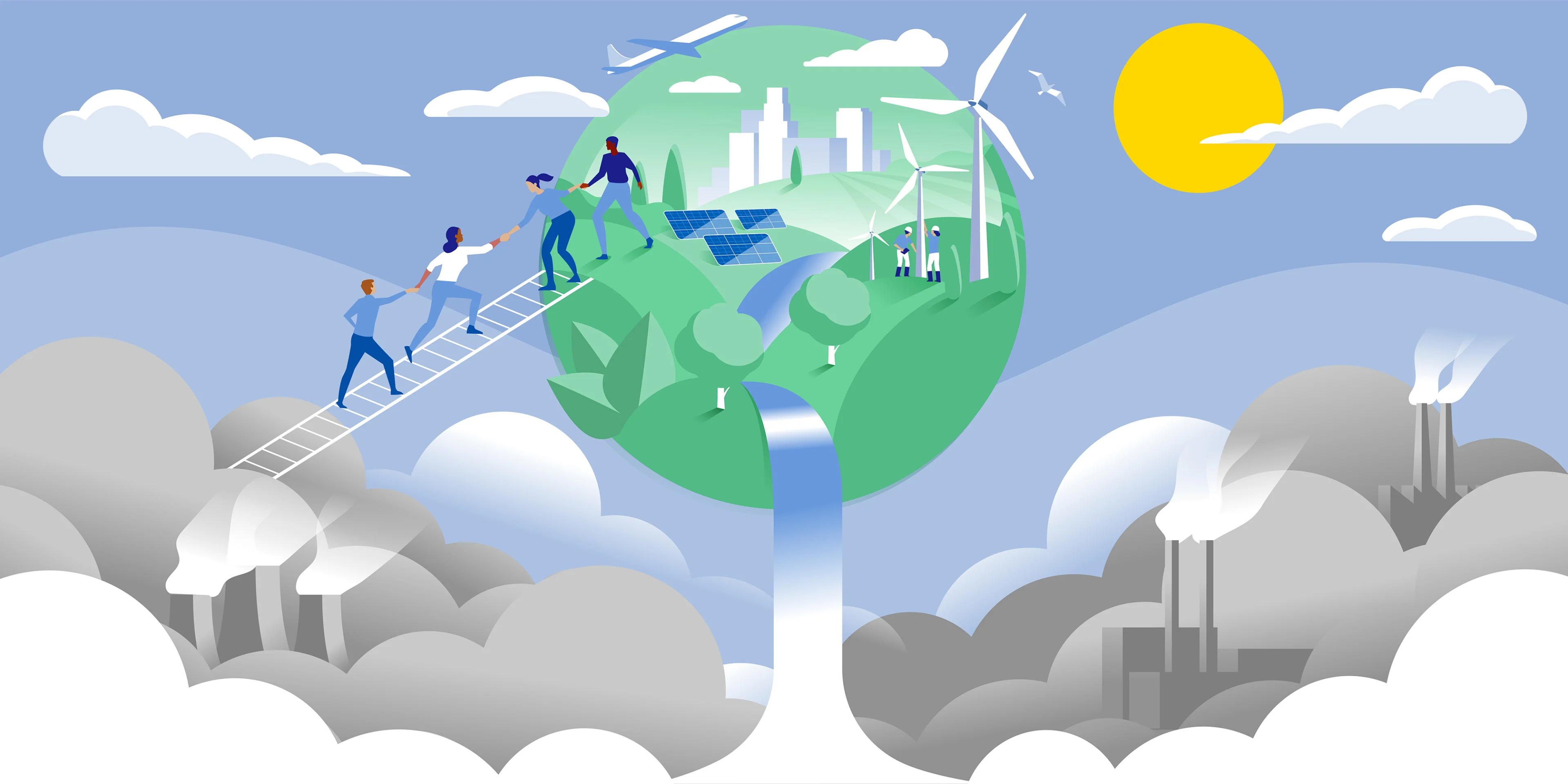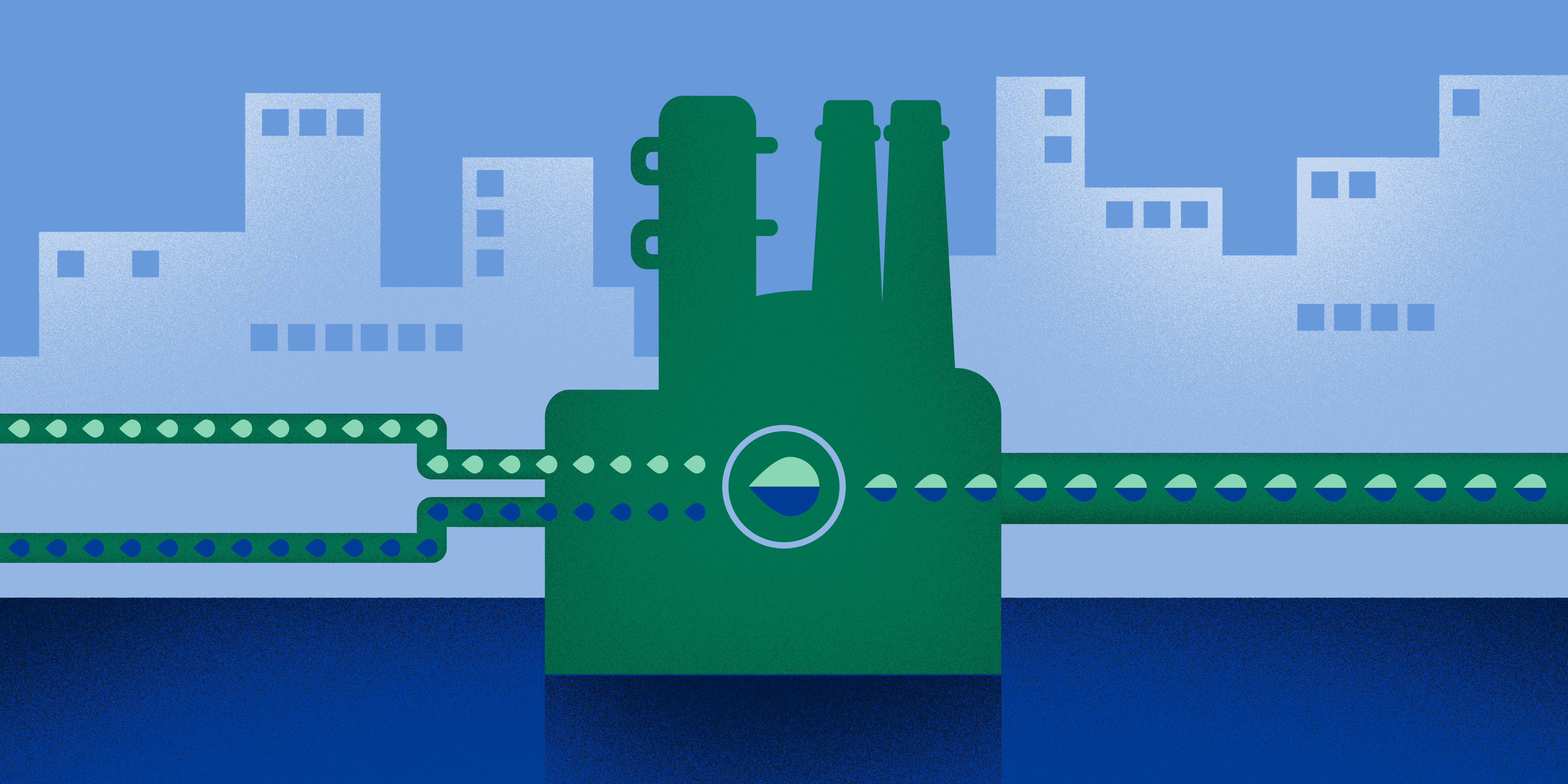
Sustainability
7 minute read
A just transition: how to save the planet without leaving anyone behind
The world is heading into an enormous energy transition that will transform our fossil-fueled economy into one powered by renewable energy. It is a transformation that is essential to limit the impacts of climate change, but it requires a total shift in the way companies do business, with major implications for workers and communities. To ensure that no one is left behind in this process and to realize a just transition into this new world order, businesses must harness the opportunities arising from moving to a net-zero economy and manage it fairly.
“When companies are working to reach their net zero targets, it is a huge transformation and it will have social and economic impacts on workers, suppliers and communities,” says Nina Norjama, head of Human Rights at Neste, a global leader in the production of sustainable aviation fuel (SAF) and renewable diesel. “At the same time, the transition to a low carbon economy also creates enormous opportunities for businesses to provide sustainable jobs and develop employee skills and future readiness,”she continues.
While we urgently need to transition to a low carbon economy, we also need a just transition that is equitable and inclusive, that drives positive social impacts, and in which everyone can see opportunity. The International Labour Organisation defines a just transition as “greening the economy in a way that is as fair and inclusive as possible to everyone concerned, creating decent work opportunities and leaving no one behind”.
The concept of a just transition entered the broader climate change agenda during the Paris climate change conference in 2015 – the landmark Paris Agreement, that has driven the decarbonization agenda in recent years, says that governments must take account of the needs of the workforce and highlights the importance of a just transition to do so.
“The idea has continued to gain traction, partly in reaction to the US withdrawing from the Paris Agreement on the grounds that it would have a negative impact on jobs,” says Nick Robins, Professor in Practice in Sustainable Finance at the Grantham Research Institute on Climate Change and the Environment.
“Until then, climate policy had been fairly ‘socially blind’ and the shock of the US decision made people think explicitly about the social dimension of the changes that are happening,” Robins adds.
This has been compounded by the clean energy revolution coming much more quickly than anyone predicted. This has created entire new industries and the jobs that go with them, but it has also eroded the viability of fossil fuel and carbon intensive companies far faster than was thought possible.
It is to avoid jobs being lost, and the social impact that comes with that, that we need to have a just transition, Norjama says: “A just transition means providing new, sustainable jobs to replace outdated job roles in fossil industries, and providing upskilling and reskilling opportunities so that people have the capabilities they need to perform the new jobs.”
The just transition is backed by policy and global collaboration
To make the energy transition a success, governments and companies need to bring workers and communities along with them.
It is no surprise, Robins says, that the US Inflation Reduction Act is explicitly focused on labor rights and bringing good quality jobs to the US. In the same vein, the European Union’s Green Deal has a just transition mechanism, which the European Commission describes as “a key tool to ensure that the transition towards a climate-neutral economy happens in a fair way, leaving no one behind”. It will mobilize around €55 billion over the period 2021-2027 in the most affected regions, such as coal-producing areas of Poland, to alleviate the socio-economic impact of the transition.
Going net zero: the changing horizons for workforces
“There is potential for net zero and the just transition to come into conflict, not least because of their different roots. Net zero is grounded in climate science, while the just transition is based on workers’ rights,” Robins explains. But it is not inevitable - this is why companies must act intentionally and collaboratively to mitigate the negative impacts, and ensure that the transition is equitable and inclusive.
The key, Norjama says, is to engage employees and ask them what they think about the company’s strategy and their future careers. An ongoing process of continuous cooperation and dialogue with personnel representatives – on topics such as business updates, competency development and wellbeing at work – are essential to engage the workforce in a positive way. This helps employees to have an open mind, flexibility and a willingness to learn, all also required if a just transition is to be successful. Where there must be restructuring, companies should invest in reskilling so workers can be competent for new roles within other parts of the business or elsewhere.
Robins points out that the move to net zero is as much about the ‘transition in’ to cleaner energy as it is about the ‘transition out’ of fossil fuels – there are huge opportunities in areas such as renewable energy and electric vehicles.
For some industries – such as automotive, utilities and mining – clear transition pathways are already emerging, where companies can make the switch from fossil-based business models to low-carbon alternatives and be well-placed to thrive in future.
The first step for companies in all industries is to be aware of what new skills and competences they require as part of their transition, before they can then upskill existing workers and hire new employees. This is not an instant process but a gradual shift that takes place over many years to ensure minimum disruption to both the business and workers.
In the case of Neste, for example, the transition from crude oil refining to producing renewable fuels started already in the 1990s, setting the wheels in motion for a gradual build on the competences needed for scaling up the renewables business over the decades to come. Securing renewable raw materials – from municipal waste to used cooking oil – is an entirely different challenge than procuring fossil oil. It is not just the chemical make-up of raw materials that is different – the value chains, R&D pathways and locations also diverge. All this has implications on the jobs and careers available at Neste, and has to be considered to ensure the transition is just for all who work there.
Implementing a just transition is good for business
Implementing just transition principles into your business is not just the right thing to do, argues Robins, but it is good for business too. He adds: “It’s necessary to overcome the false divide between environmental and social issues, but it’s also really smart – it’s about building the human and social capital that businesses need for new green business models.”
A report from the World Business Council for Sustainable Development’s Business Commission to Tackle Inequality explains that when companies ensure the net zero transition is done in a just way, it helps companies to ensure their own economic and workforce stability, enhances productivity and the capacity for innovation, and helps to reinforce their social license to operate.
Neste, for example, has hired thousands of people over the last three years, Norjama says, and “new employees often say that the transition that the company is going through, and our sustainability commitments, are what inspired them to apply.
“Neste’s holistic sustainability vision encompasses both environmental and social topics, including our human rights vision to create a more equitable and inclusive value chain by 2030, in which everyone works with dignity.”
Just transition: watch this space
According to the World Benchmarking Alliance, very few companies are currently performing well on the just transition. But Robins thinks this could change rapidly: “I think the adoption curve could be quite steep.
“Companies are not having to invent good practices, just apply them. The just transition is now much more central to global climate discussions, especially after COP27 at Sharm El Sheikh and that is being recognized by the business community.”
The reality is that getting the just transition right is not really optional. Without it, and without creating solutions that allow everybody to see the pot of gold at the end of this transition, it will not be possible to effectively mitigate climate change or unlock the opportunities that the transition to a net-zero society offers.
And if we get it right, the prize is huge - not only a healthier planet for our children, but one in which jobs and companies have evolved to achieve lasting sustainability, with nobody left behind.
Credits:
Mike Scott, An award-winning business and environmental journalist whose work has appeared in publications including the Financial Times, the Guardian and Forbes.





